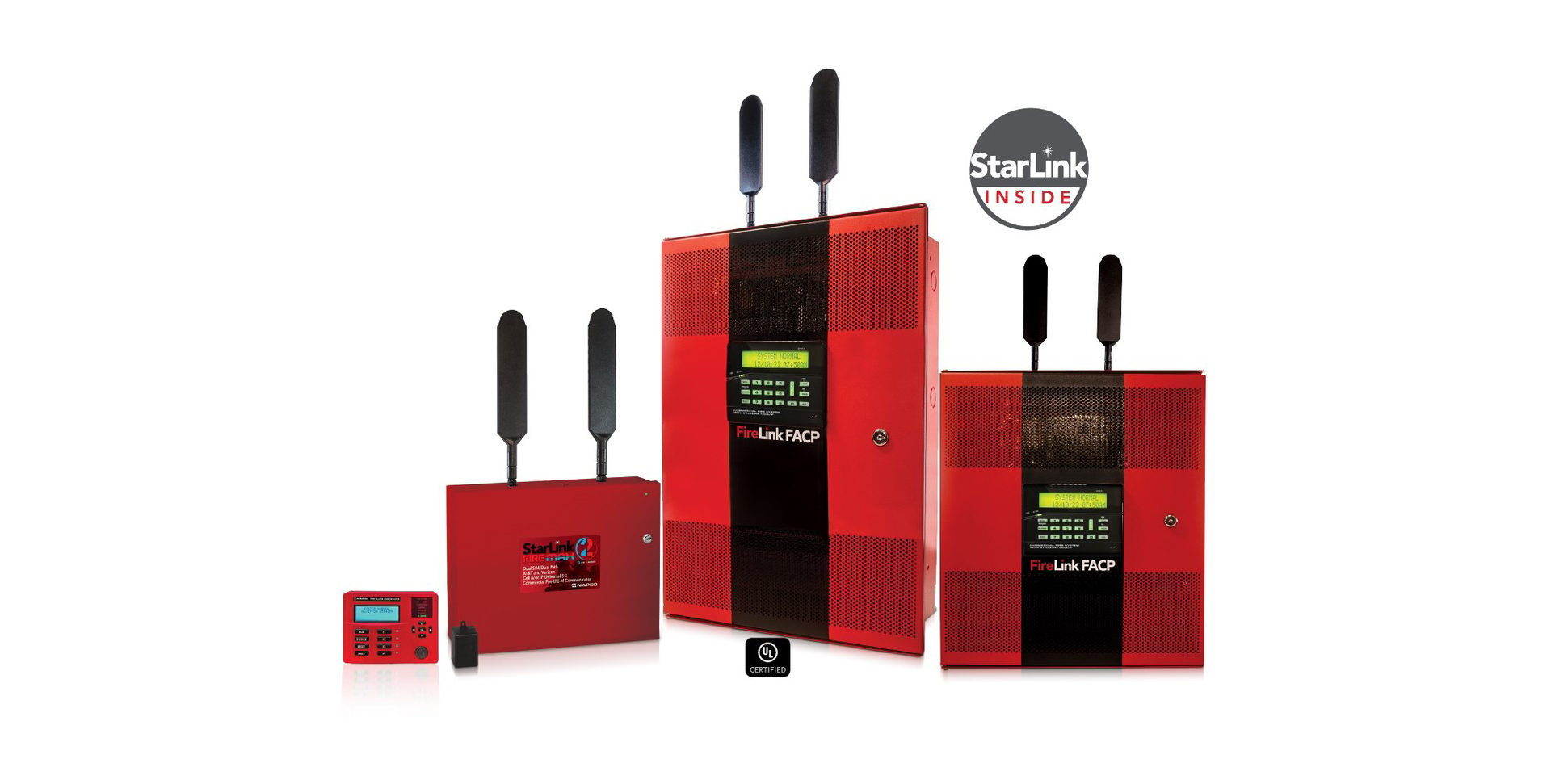june 2025
State of the Market:
Intrusion & Smart Home 2025
In the face of shifting consumer expectations, new AI capabilities, and growing competition from DIY platforms, professional security dealers are adapting rapidly.
By SDM Editors


John Loud, president, Loud Security Systems, has spent 30 years in the residential intrusion market. Bio image courtesy of LOUD Security Systems. Background image courtesy of bubaone / DigitalVision Vectors / Via Getty Images
The residential intrusion and smart home markets remain highly active in 2025, according to leading security dealers and manufacturers. While inflation and interest rates have affected consumer spending in some categories, demand for home security has stayed relatively resilient. Many dealers report strong volumes, though new construction softness has impacted system sales in certain regions. This overview, based on insights from leading security dealers and manufacturers, was published in two parts in SDM Magazine in June 2025..
Market Overview
The first installment of SDM’s 2025 State of the Market Intrusion & Smart Home Report looked at how the market performed in 2024 and some of the overall trends. John Loud, president, LOUD Security System Inc., Kennesaw, Ga., said his company continues to see a healthy stream of new installations, driven by both new homeowners and customers looking to upgrade older systems. While overall pricing remains stable, concerns about tariffs and material costs have created pressure on margins. The company is watching global supply chains closely and keeping a buffer stock of key components to hedge against future disruptions.
The convergence of security and convenience is a defining characteristic of the modern residential market. Homeowners increasingly expect their systems to do more than sound an alarm. They want automation, mobile control, and seamless integration with lighting, HVAC, and video doorbells.
There is a growing awareness among consumers about proactive monitoring and verification standards. As more jurisdictions adopt AVS-01 and prioritize validated alarms, dealers have an opportunity to differentiate themselves with systems that can meet those standards.
Chris Oram, service department manager, Eagle Sentry, Las Vegas, said his company is finding success with both traditional intrusion systems and high-end custom integrations that include AV, lighting, and automated window coverings. By targeting mid- to high-end residential customers, they’re able to add value beyond security and increase RMR in the process.
More than three-quarters (77 percent) of the respondents to the SDM 2025 Forecast (conducted in November 2024) rated their confidence in the intrusion market as good to excellent, with 23 percent believing it was fair/poor. Those rating it positively tipped down by 4 percentage points over last year.
The AI Effect
The second installment of SDM’s 2025 State of the Market Intrusion & Smart Home Report looked more in-depth at the top opportunities and challenges facing the market in 2025 and beyond. For example, artificial intelligence (AI) is no longer a future concept in residential security — it’s already reshaping how systems detect threats, reduce false alarms, and improve relationships with emergency services. Experts across the industry agree that AI is fundamentally changing what’s being sold and how it’s marketed.
Major national brands such as ADT and SimpliSafe are doing much of the marketing heavy lifting by making consumers aware of proactive, AI-driven video monitoring, even in the residential space. That awareness trickles down and benefits local providers. These large brands attract customers who prefer a hands-off approach, but many homeowners still seek local providers for a more personalized experience. This dynamic is helping boost visibility and acceptance of advanced video and AI technologies.
According to Loud, the proliferation of proactive video monitoring — even in DIY platforms — bodes well for the industry overall. Today’s installations already look drastically different than they did just five years ago, and that trend is expected to continue, with video increasingly becoming the core of residential systems.
Reflecting on the evolution of video adoption in the home, some industry veterans point to early skepticism around products like video doorbells — questioning their necessity — only to later see explosive growth driven by changing consumer habits and the rise of e-commerce deliveries.
Judy Jones, vice president of marketing, NAPCO Security Technologies, Amityville, N.Y., emphasized that AI is already proving useful in consumer-grade products such as smart doorbells, which now distinguish between people and irrelevant motion like leaves blowing in the wind. AI has also become integral to central station operations, predictive analytics, facial recognition, forensic video search, and gunshot detection. The potential applications of AI in physical security are expanding rapidly and show no signs of slowing down.
The customization potential is a major draw for users. For example, some homeowners might want to be alerted the moment a package arrives, while others may prefer to ignore routine deliveries. AI can allow the system to adapt to those preferences and integrate seamlessly into daily routines without becoming a nuisance. This ability to merge security with convenience is where AI shows its greatest promise.
Dealers like Eagle Sentry are integrating AI through partnerships with platforms such as Alarm.com. While AV systems were once the most commonly connected devices in the home, categories like lighting and shades have since surged in adoption. More recently, AI commands within Alarm.com’s platform have begun to support smarter user engagement by learning routines and offering timely reminders or automated actions — such as prompting homeowners to arm their systems.
This proactive intelligence can cover everything from automating preferred music playlists when someone returns home to optimizing environmental settings for better sleep. The systems are beginning to understand who is in the home and when, and can tailor their responses accordingly — something that was once considered aspirational but is quickly becoming a reality.
From a security perspective, this data-driven intelligence provides even deeper insights. Smart systems may soon be able to discern not just that someone is home, but how many people are there, whether children have arrived home from school alone or with friends, and whether they are doing homework or playing in another room. These insights shift the conversation from basic automation to real, contextual understanding — a leap that redefines what it means to live in a “smart” home.
Market Challenges: DIY, Talent & Tariffs
Despite the potential of these technological advancements, the residential intrusion and smart home sectors do face challenges. One of the paradoxes of the DIY market is that while it has helped raise general awareness around smart security, it hasn’t necessarily helped local dealers build brand recognition.
Jones noted that DIY systems, which now account for nearly half of the residential market, are driving broader adoption. However, to remain competitive, professional dealers must meet modern consumers where they are — especially millennials and Gen Z, who expect mobile control, Wi-Fi connectivity, and instant setup. These users are less inclined to wait for scheduled technician visits or browse traditional advertising channels.
Seventy-one percent of the respondents to the SDM 2025 Forecast (conducted in November 2024) rated their confidence in the smart home market as good to excellent, with 29 percent believing it was fair/poor. This represents a 5 percentage point increase in positive ratings over last year's report.
This shift has also opened the door for a new generation of security professionals. Many next-gen dealers, including those taking over family businesses, are embracing the ship-self-install model that became more widely accepted during the pandemic. This approach offers convenience and aligns with these evolving customer expectations.
Ryan Park, senior product director of safety and security, Resideo Scottsdale, Ariz., said the key lies in clearly communicating the value of professional installation. Dealers need to demonstrate the advantages of monitored, professionally installed systems over basic DIY solutions. Offering enhanced services such as AI-powered video detection, home automation, and integrated life safety monitoring helps reinforce that value.
Park also emphasized the importance of supporting dealers with advanced technology, training, and customer education programs to help articulate these benefits effectively.
Labor shortages are another ongoing issue across the security industry. Many dealers cite technician recruitment as their biggest obstacle — but also potentially their greatest opportunity. Investing in technician training and workforce development has become essential for ensuring future growth and service quality.
Economic concerns — particularly the uncertainty surrounding tariffs — also weigh heavily on the market. With many security components sourced from China or routed through Mexico, the potential for rising costs is significant. LOUD Security, for instance, has focused on building up recurring revenue streams and maintaining cash reserves to weather economic volatility. The company has also begun pre-purchasing inventory to hedge against future tariff increases.
This strategy, Loud believes, not only stabilizes pricing but also helps preserve jobs during tough times. Investing in people, inventory, and the local community are seen as long-term safeguards against the ripple effects of economic disruption.
From the manufacturing side, Jones sees NAPCO’s own product design as part of the solution. Its systems are designed to be cost-effective and easy to install, with built-in tutorials and multilingual setup prompts, reducing labor costs and time-to-install for dealers facing staffing challenges.
Conclusion
Despite the headwinds, the outlook for the residential intrusion and smart home sectors remains positive. In fact, economic anxiety may even spur increased demand, as homeowners seek greater peace of mind during uncertain times.
The adoption of new standards like AVS-01 presents another growth opportunity. As more monitoring centers and Authorities Having Jurisdiction embrace this standard, dealers who understand and can educate their customers about validation scoring can differentiate themselves.
Looking further ahead, dealers should consider tapping into the full potential of the data already flowing through their systems. AI-driven insights — such as tracking energy usage, monitoring door activity, and evaluating temperature differentials — can deepen customer engagement and increase retention.
The opportunity lies in communicating these benefits regularly. By consistently demonstrating the value of a connected, intelligent home, dealers can strengthen customer relationships and build long-term loyalty. In an industry where peace of mind is paramount, remaining top-of-mind can make all the difference.
Wireless Threat to Smart Home & Security Devices
Avi Rosenthal, chairman of Z-Wave Alliance, and managing partner, BlueConnect Partners, Ashburn, Va., highlighted an imminent threat to the intrusion and smart home markets. NextNav, a geolocation company, has petitioned the FCC to convert the 900–920 MHz unlicensed spectrum into a licensed one for exclusive use. Here is a look as some of the possible implications and industry response:
- This band powers millions of security sensors and Z-Wave smart home devices — all of which could become obsolete.
- SIA and other stakeholders have pushed back, citing massive disruption to security, tolling, rail, and even federal protection systems.
- NextNav argues it’s needed for a GPS backup using terrestrial 5G, but alternatives exist that don’t disrupt existing systems.
- The FCC is reviewing proposals through a Notice of Inquiry (NOI), with responses submitted in April 2025.
- SDM will continue to follow this issue as it develops.

